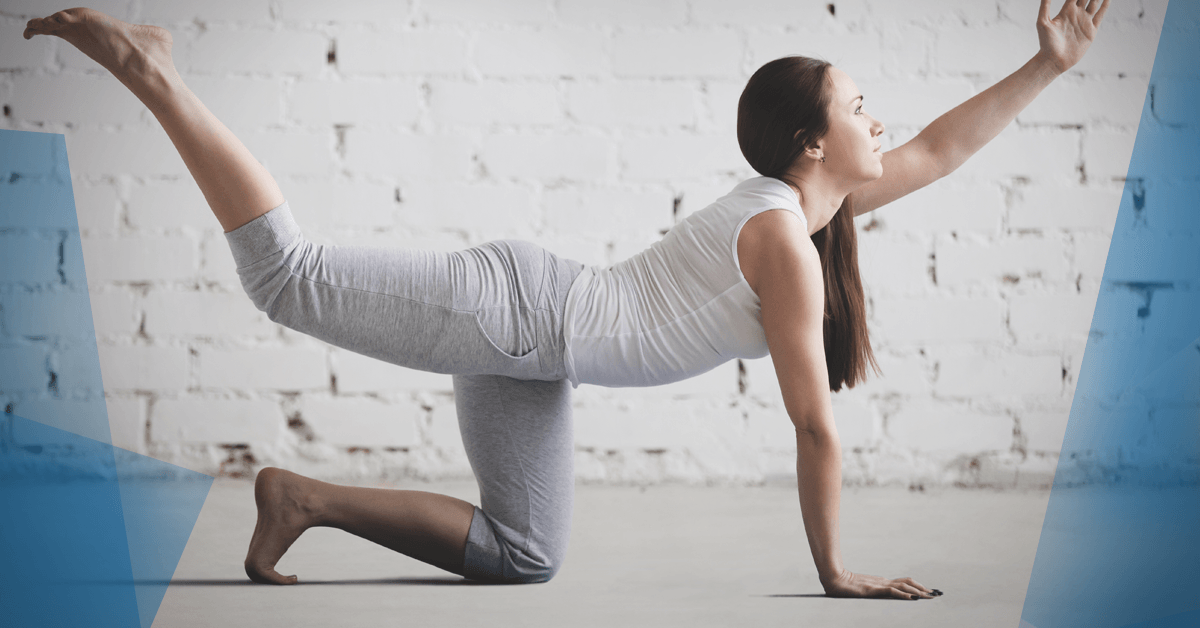“Can you meet with my dad? He can’t seem to resolve what’s wrong with his lower back.”
My client, Sara, brought up her dad’s struggles as I logged her numbers at the end of our training session.
“He’s been complaining of back pain for years,” she continued. “He’s been to this trainer and that trainer, not to mention physical therapists and chiropractors, and he can’t seem to pinpoint the root cause. Nothing has stuck.”
“Well, I’m not Gandalf,” I said, with my customary evidence-based modesty, “but I’d be happy to take a look and see if I can help.”
In addition to not being a wizard, I’m not a physical therapist, a chiropractor, a massage therapist, or anyone else who can diagnose and/or treat musculoskeletal conditions.
But as a strength and conditioning coach, I can assess and audit movement. I can take into account a client’s health history, ability level, and goals, and then create a safe, effective, and time-efficient training program based on that information.
I’m also pretty good at calling out BS.
For example, in the last season of Game of Thrones, you remember when Jon Snow led that expedition north of the Wall to capture a wight? (For those unsullied by GoT fandom, a wight is a corpse that’s been reanimated by the White Walkers, who were themselves created by the Children of the Forest … On second thought, let’s just go with zombie. It’s a zombie.) Logistically, that trip would’ve taken months to pull off. But they did it in one episode. Like it happened in a week or two.
Pfffffft, whatever.
More to the point of this prehab article, have you ever noticed that some personal trainers haphazardly toss “simple” exercises like dead bugs, bird dogs, and glute bridges into their clients’ programs? And that they’ll do it without explaining to their clients why those exercises are important? And, because they didn’t explain the purpose of the movements, they leave their clients with no idea how to do them correctly?
If you’re like me, you see this a lot. And each time you see it, you want to throw your face into a brick wall.
READ ALSO: Three Ways to Write Better Training Programs
Back to Sara’s dad
We met a week later, and the conversation was … interesting.
As we went through his health history, I listened to him describe just how long he’d been dealing with his lower back pain, and how many health and fitness professionals he’d worked with over the past two decades.
When it was my turn to talk, and we got around to specific exercises, I didn’t mention anything he hadn’t heard before.
"Yeah, yeah, they all had me do glute bridges and dead bugs,” he said. “I know how to do them.”
“Show me.”
And he did.
You know how a jaw drops in a cartoon? Yeah, that was me.
When I asked him to demonstrate his glute bridge and tell me where he felt it, he said his quadriceps, hamstrings, low back, and eyeballs. Everywhere except where he was supposed to feel it.
In all that time, and with all the money he’d spent, he’d never learned how to do a glute bridge in a way that allowed him to feel his glutes doing the work.
We all know that the glutes help protect the lower back. Conversely, when the glutes don’t function properly—that is, when they don’t act as the body’s primary hip extensor—what picks up the slack?
The lower back.
And don’t even get me started on his bird dogs and dead bugs. If the imaginations of Stephen King and Mary Shelley had twins they wouldn’t have looked more nightmarish.
I was equal parts flabbergasted and pissed off—flabbergasted that he’d been told the correct exercises to perform, and pissed off that no one had taken the time to teach him how to do the exercises correctly.
This isn’t an isolated event, either. I see it all the time. You probably do as well. There’s a pandemic of incorrect form on corrective exercises. I think it happens for three reasons:
- Many fitness professionals have no idea why these exercises are so commonly prescribed. A trainer who can’t explain the purpose can’t coach or cue them properly.
- Trainers teach them incorrectly because they learn the exercises from YouTube or Instagram videos posted by people doing them incorrectly.
- The general public is the final link in this chain of bad training advice. When good intentions meet bad instructions, the result is a lot of people flailing around on the floor with no idea what they’re trying to accomplish.
So let’s look at each exercise in more detail.
READ ALSO: How to Make Sure You Aren’t One of the Bad Trainers
How to properly coach the dead bug exercise
The dead bug is one of my favorite core-training exercises, and a splendid choice to improve motor control and spinal stability. They’re superb at enhancing lumbo-pelvic control while training individuals to “offset,” or resist, external forces, like the movement of their extremities.
They’re also a potent corrective exercise for an overextended posture or excessive anterior pelvic tilt, something that’s fairly common among athletes, and that we’re seeing more and more in general population clients.
The key word there is “excessive.” Anterior pelvic tilt isn’t bad or dysfunctional. The lumbar spine is designed to be in this position. But someone who’s in excessive anterior pelvic tilt will almost always have extension-based back pain. It puts an ungodly amount of stress on structures like the facet joints and posterior discs, which, down the road, can manifest into spondylosis (spinal arthritis) or even a more profound issue like spondylolysis (end plate fracture).
Mike Robertson has a cool term for this: flawed active stability. In an effort to gain stability, you’re effectively crushing the spine by cueing the body to engage the paraspinals and spinal erectors.
It’s not uncommon for people with excessive anterior pelvic tilt to experience chronic pulled hamstrings, anterior knee pain, hip pain, and a myriad of other issues.
Dead bugs are a fantastic way to encourage more posterior pelvic tilt, while simultaneously enhancing motor control and engaging the lumbo-pelvic-hip stabilizers to do their job.
How to properly coach the bird dog exercise
Popularized by Dr. Stuart McGill, the bird dog is a staple for spine hygiene, targeting both the lower back and hip extensors. It also, and more importantly, teaches the discipline of using proper hip and shoulder motion while maintaining a stable spine.
The bird dog is also one of the most butchered exercises on Earth.
Here are two examples, about a year apart, of women I worked with at CORE who came to me with lower-back issues:
EXAMPLE ONE
Ver esta publicación en Instagram
EXAMPLE TWO
Ver esta publicación en Instagram
Each had worked with a different trainer before coming to me. To be clear, I’m not calling those trainers out. My point is to show how easy it is to mess it up.
On the one hand, the seeming simplicity of the bird dog leads to lackadaisical execution. If clients think the only goal is to extend the contralateral arm and leg, that’s what they’ll do, with no focus on maintaining a stable spine. It’s just out and back for however many times the trainer tells them to do it.
On the other hand, a client who’s trying too hard to do it right will look like my clients in these two videos. She’ll go into excessive spinal extension in order to get a full range of motion. For someone with extension intolerance, doing the bird dog the way she thinks she’s supposed to will feed the very same lower back symptoms she’s trying to alleviate.
How to properly coach the glute bridge exercise
There’s no need to overcomplicate things here. Most of what you need to know about the glute bridge is right there in its name.
You lie on your back with your feet flat on the floor and knees bent roughly 90 degrees. Lift your hips until your body forms a straight line from chest to knees. Yelling “this … is … Sparta!” every rep is optional.
As explained earlier, and as you knew long before I explained it, the goal is to target the glutes with a movement they’re designed to do: hip extension. If your client can only complete the movement with excessive lumbar extension, or feels it in the hamstrings and quads instead of the glutes, then something is clearly wrong.
But figuring out exactly how and why the client is getting it wrong isn’t always straightforward. This is a case where everyone is, indeed, a special snowflake. Once you take into account all the possible combinations of bone length, pelvis shape, hip-socket orientation, muscle lengths, and adaptive characteristics caused by activity (or lack thereof), the variety is infinite.
A few specific considerations:
Do they feel it in their lower back or hamstrings?
Slow them down, and reiterate that this is a glute exercise, not a “see how fast you can finish your reps” exercise.
Do they feel it in their quadriceps?
The problem may be that they’re pushing through their toes. Teach them to push their heels into the floor.
Do they make those changes and still feel it in nontargeted muscles?
As with squats and deadlifts, each client will need to experiment with stance width and foot position—moving them closer to the butt or farther away.
Also consider range of motion. As with the bird dog, many will try to complete the movement by hyperextending the lower back. Find the point of maximal glute activation, and stop there. You’ll know you have it right when the client feels it in the glutes, and nowhere else.
READ ALSO: The Real Reason Why People Everyone Must Squat Differently
Final thoughts about these prehab/corrective exercises
What I’ve just explained only works for your clients if you, the fitness professional, can explain the goal of each exercise in a way that makes sense to them. But you can’t explain what you don’t understand.
And if you don’t understand “simple” exercises like the dead bug, bird dog, and glute bridge, how in the world are you going to coach someone with a barbell on his back? It’s like trying to teach high school algebra when you’re still struggling with the nuances of long division.
If, on the other hand, you do understand them, don’t assume your clients share your understanding. It doesn’t take a wizard to coach these three exercises. But it does require a fitness pro who’s paying attention.










